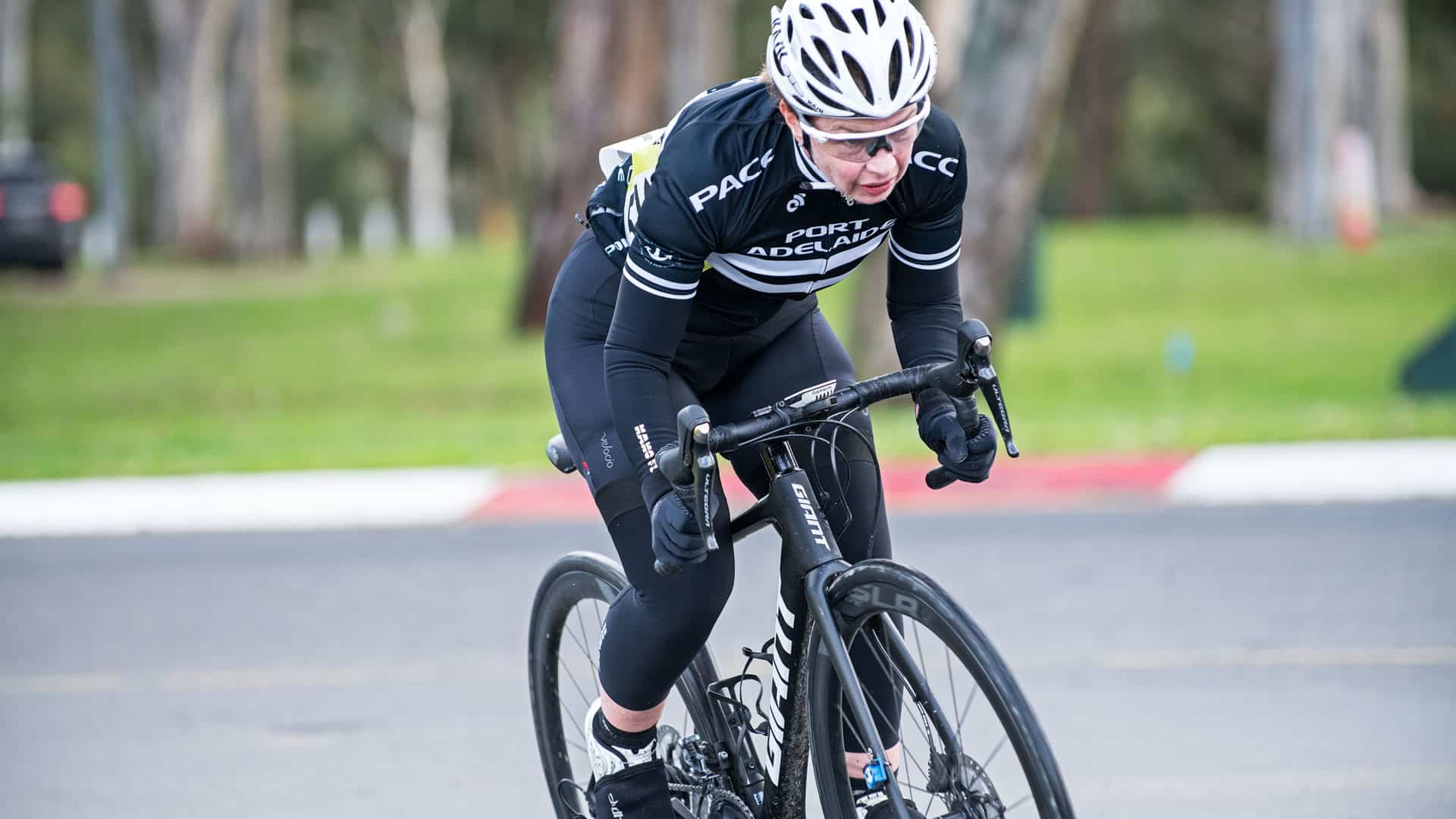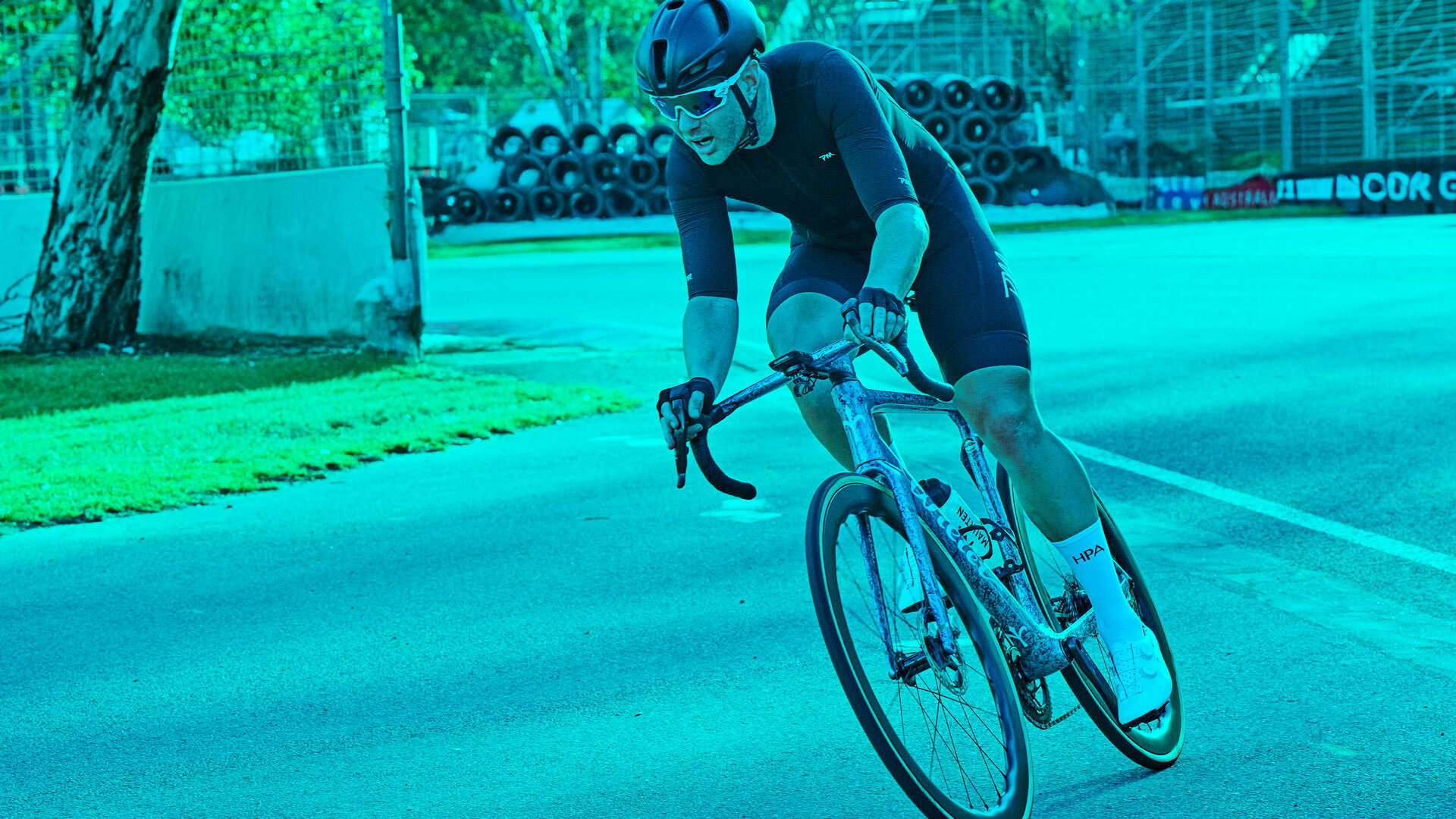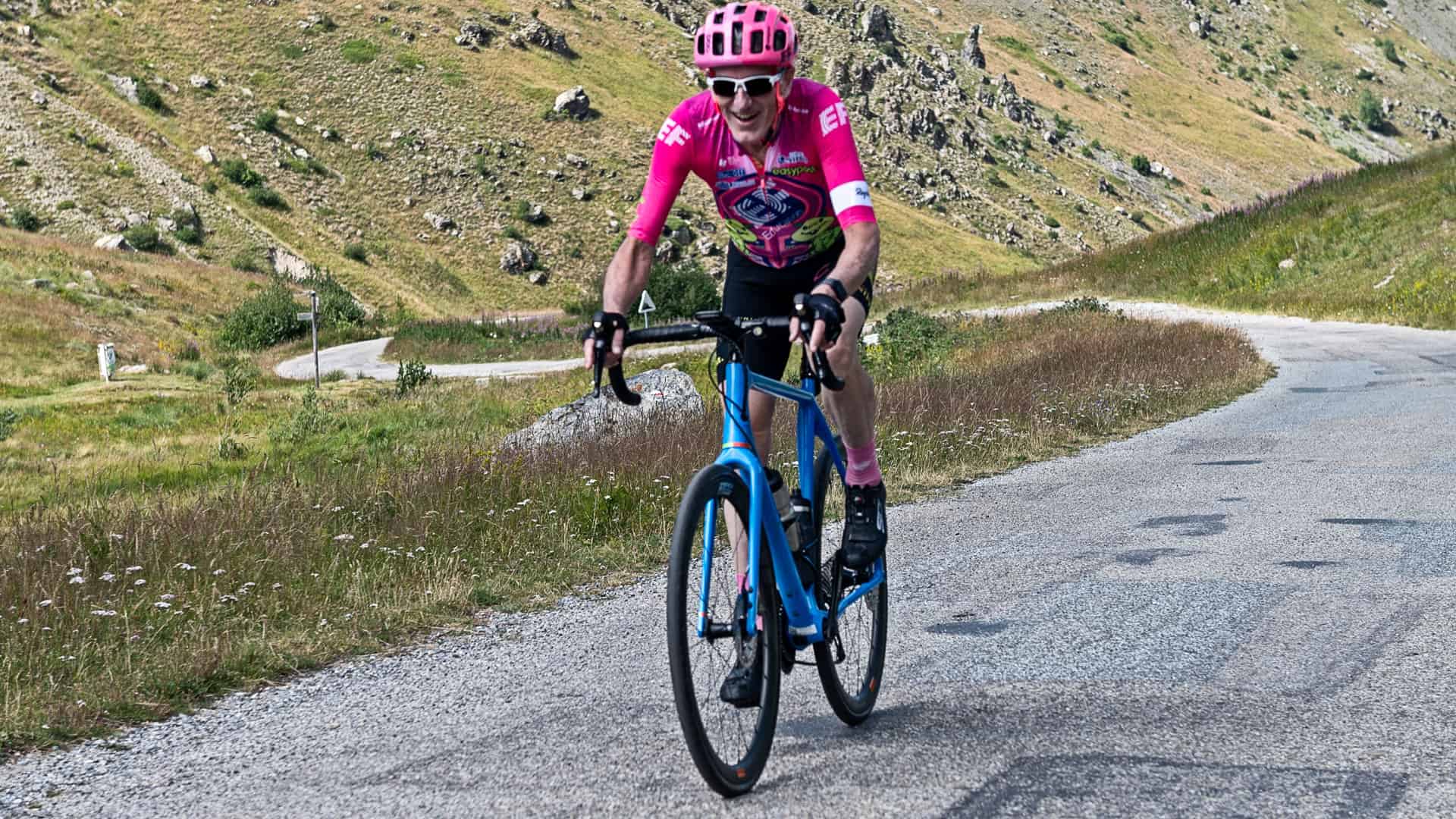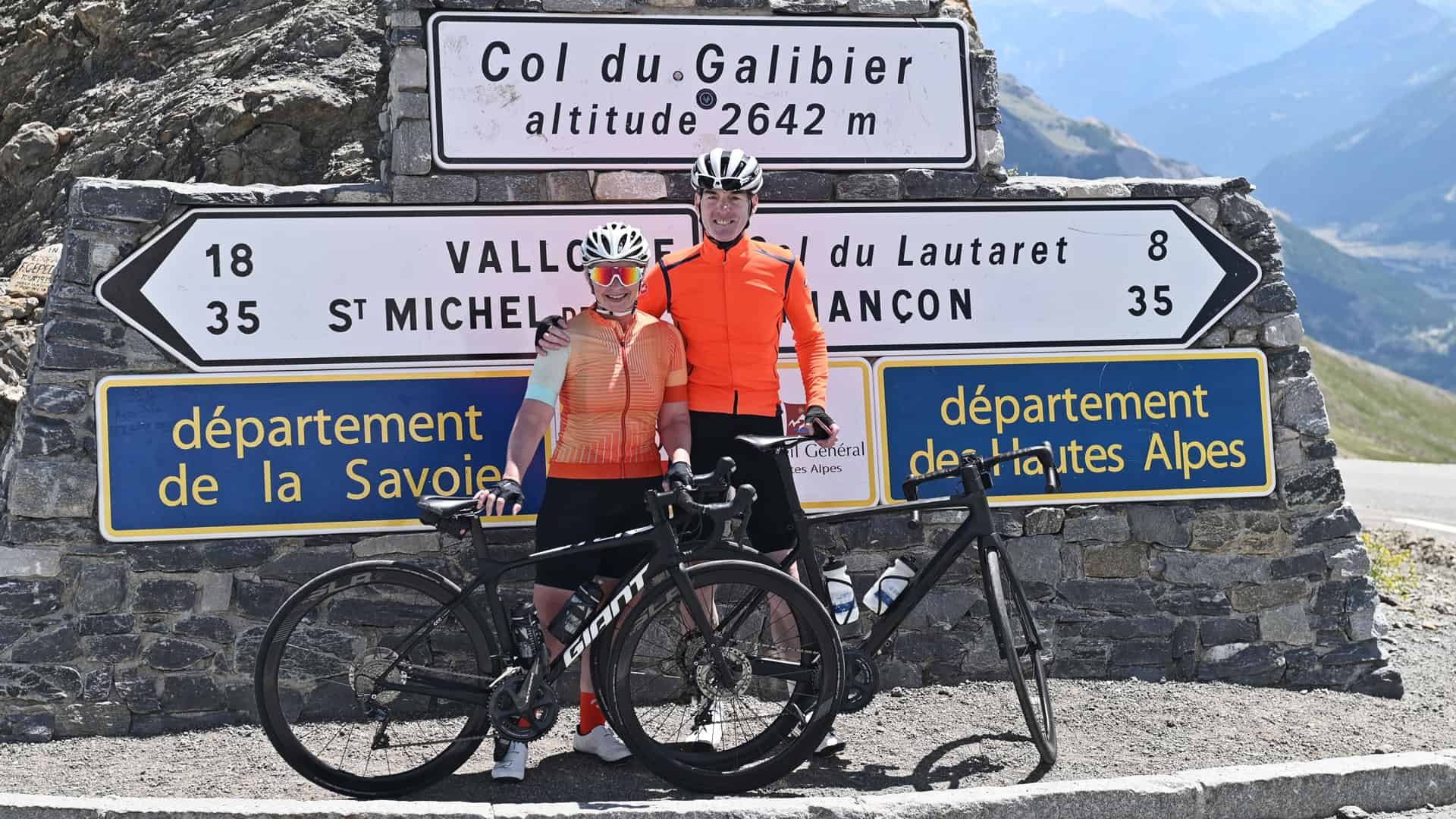We recorded this video at the 2012 November Bright Boot Camp. In this video David Heatley performs an Altitude Training demo with a cyclist to show the effects of Altitude training and how it can be beneficial for cyclists wanting to improve their performance.
We run personalised Altitude Training sessions in our cycle studio at Mansfield. Bookings are essential. Want to give it a try? If you are interested in doing a no-obligation free Altitude Training session please contact us using our contact us page.
Transcript from this video:
David Heatley: Okay. Thanks, guys. Were just going to do a bit of demo on altitude training, now. I was very excited about altitude training when it first out. Ive done a bit of mountaineering, and I know what to expect when you get into high altitudes. They were able to produce some machines recently cheap prices. We got into altitude training big time, and its fantastic. Weve got David here. Now David, on a good day, can pullyou can do about what, 280 watts for about an hour?
David S: Ah..
David Heatley: On a good day?
David Heatley: Yeah.
David Heatley: Yep, about there? All right. Okay, so were going to get David to pull 150 watts. All right, this little thing here just measures the oxygen saturation. If you ever go into the hospital and they wire into the machine, the first thing that happens is they get your pulse and your oxygen saturation. Generally, at sea level, you would normally run around 98 or 99 or 100 if youre a generally healthy human being.
What we tell people on altitude training, all this machines doing, is just extracting oxygen from the air that hes breathing. Its not quite the same as climbing up to the top of the mountain and sitting at three, three, five thousand feet or five thousand meters, because you dont have that pressure. Its all unpressurized. What we do, is were able to simulate the reduction in oxygen, and were able to reduce the blood-oxygen saturation level. When we do that, that stimulates or triggers your body to start producing more red blood cells and also improve your efficiency.
What were going to do here is, were just going to put this little on Davids finger, and it will give me a number. Hopefully, that numbers not too shabby, because weve just got the machine idling at the moment. Davids sitting on 98. Okay, so thats perfect. Hes operating at about sea level, and thats the number that we would expect to see at sea level. What were going to do, were just going to crank it a little bit.
[Laughter]
Davids just going to hold 150 watts. What well see in the next couple of minutes, its very quick. The machine is just starting to kick in. It takes a little while for it to Its just starting to restrict the amount of oxygen. Well see the bag here, and youll see that David will stop having to breathe. At the moment, David is not having to breathe very hard at all. The bags fully inflated. Now, hes starting to have to breathe. Its just dropped down to 96.
Audience: What is his Heart rate doing?
David Heatley: Heart rate will start increasing as well, because hes having to work a bit harder. Its just dropped to 96. Youll see that hes actually to start to breathe pretty heavily. It just dropped down to 95.
Audience: Whats the level of oxygen at sea level?
David Heatley: Whats that?
Audience: Whats the level of oxygen at sea level?
David Heatley: Normally, at sea level, I think its at quite to be honest its now at 21 percent, I think.
Audience: And what do the machine go down to?
David Heatley: Look, its a guess I think this machine goes down to about 17 or 12 percent, but I dont quite know. Its the equivalent around 5,000 vertical meters. How you going, David? Good, all right, okay. So David now hes dropped to 87 percent. Now, if you were to walk into a hospital Anybody work as a nurse here or work in a hospital?
Audience: I do.
David Heatley: Okay, where does the alarm start going off?
Audience: Ninety to ninety-one.
David Heatley: Whats that?
Audience: Ninety to ninety-one.
David Heatley: Ninety to ninety-one, okay. Hes sitting on 85 at the moment. So youd have the nurses run in there and go, Whats happening?
Audience: Wed give him oxygen.
David Heatley: Youd start giving him oxygen.
[Laughter]
David Heatley: All right, well, were not going to do that today.
[Laughter]
David Heatley: Hes sitting about 82. On a scale of one to ten, David, how hard are you riding?
David S: Ah, eight or nine.
David Heatley: About an eight? On a scale of one to ten? Hes only producing 150 watts. Now, 150 watts, you can ride to about 25 to 28 an hour. A flat road and youre producing about 150 watts. Thats how hard David Ss riding his bike at the moment, but he feels like hes riding at probably about 45 kilometers an hour.
The great thing about altitude training is that we can start exercising your blood oxygen transport system at really large intensities. We can do this as a recovery session, but were actually working athletes pretty hard.
There are symptoms after doing an altitude training session. Theres two things that usually happen, after they do an altitude training session. The first thing is that it really knocks you out. When I started doing altitude training, Id do one hour on the bike, and then Id go and Id sleep for three in the afternoon. It knocked me right out. The other thing is that it makes you really hungry.
David Heatley: You okay? Youre nice and settled there?. Hes sitting about 80, hes breathing quite hard, and hes producing about 150 watts. We just going to crank the machine up just a fraction more.
Audience: Ah.
David Heatley: You all right? All right. Well get to the point, and I just want David to hold about 150 watts. Hes dropping to 77.
Audience: Wow.
David Heatley: Yep. Now, we usually wont take people past the high 70s, generally. Hes around 77. Obviously, hes basically, the machines not able. Its just starting to run to the point where the machines not able to deliver enough oxygen, because hes actually breathing pretty heavily. Hes dropped to 75. At some point. 74, 73. All right.
Audience: He might turn blue.
Audience: He must do a lot of this.
David Heatley: Yep, its pretty scary numbers isnt it?
Audience: Yes.
David Heatley: Hes still riding his bike. Now, thats pretty impressive. Hes leveled it out. On a scale of one to ten, David?
David S: A 10.
David Heatley: Yeah, a 10, right? Okay. Hes working it pretty hard, so well crank it back. I dont want him to pass out. Hell fall off his bike, and then he wont be able to ride tomorrow. That wouldnt be very good, would it?
Audience: How many altitudes sessions do you have to do?
David Heatley: Three session. About an hour a session, two to three sessions.
Audience: Do you have to do them all in the same week?
David Heatley: Yeah, you can actually. Yep. We just crank it back. Ill show you how quickly. You see hes sitting on 76. If we pull this off, Ill show you how quickly hell recover. Usually, he gets a bit of a head rush right now while his bodys adjusting very quickly to the rush. Seventy-seven, 88, 89, 90, 92, 93, 95, 96, 97.
Audience: Oh, hes back. [Chuckle]
David Heatley: And hes back. I expect 94, 95. A couple of more moments, and back up at 98. Yep, fantastic. Thank you very much, David.
David Heatley: Beautiful. Fantastic. Bravo. We really enjoy altitude training. Its a great way you can get some good efforts in. Do them in a recovery. Get a really good workout. The great thing is that youre working your blood oxygen transport system. The thing is that you noticed Davids having to breathe quite deeply. Thats actually quite tiring in itself. Actually, you start to exercise the diaphragm. What will happen is that, Davids training for the Tour of Bright at the moment. Well just give him a couple more moments on the bike just for his body to adjust. What will happen is, once he gets past the toll gate on Hotham, he will find that the altitude will affect him less that the other riders who havent been going altitude training. Thats a bonus. The other thing is that hes naturally increasing his blood, his hema count. Hema, what is it?
Audience: Hematocrit
David Heatley: Hematocrit count. Hell be naturally increasing that, so generally, hell be riding more efficiently. Hell be able to put out some really good power. The other thing is things like when youre drinking from a bidon (drink bottle) you got for drinking. That kind that you need to catch up with your breathing? Thats real juiced as well. Youll still see a little side effects. It will make you ride faster up hills, along the flat. Smack your buddies over and do better in races, without obviously being illegal. Any questions around altitude training.
Audience: Can you sleep with it on?
David Heatley: Yeah, you can actually. Generally, we recommend that people do active sessions. One of the issues about doing There was, sleep hard, train low protocol. The big issue about that protocolnothing wrong with that. Its just as effective. The big issue with that is the recovery. Its like you want to get good recovery at night if youre exercising really hard during the day. The problem is if youre going into an altitude tent night, youre not getting good recovery. You wake up in the morning, youve got a splitting headache. Youre a bit dehydrated. Youve been working hard all night. That impacts your ability to be able to train during the day. We generally recommend that if we lower the blood oxygen saturation three times a week, we get a very similar effect, without knocking around too much.
Audience: Do you cover Altitude training with a tent?
David Heatley: Whats that?
Audience: Do you cover Altitude training with a tent?
David Heatley: Altitude tent?
Audience: Yeah.
David Heatley: No, no. We just talk about this sort of altitude training.
Audience: How safe is altitude training?
David Heatley: How safe is altitude training?
Audience: Yeah.
David Heatley: When were running altitude sessions, were monitoring so we dont obviously, we havent seen any athletes turn blue, but were monitoring their oxygen saturation. We sit them at a particular level thats the optimum, so the sweet spot, yeah.
Audience: How much Altitude training do you need to do?
David Heatley: Oh, yeah, generally, we recommend a four to six week period on the altitude machine peaking for a particular event. Altitude trainings a little bit accumulative, in that the effect is like training: You can build on it. You can do a session for six weeks, and then you do your big race, or your big event. Then, you can go back and do another six-week block and youre better to adapt a lot quicker. You get the effects quicker than if you were just coming cold. Generally, weve had athletes on it for three months. It really depends on how much time youve got available to do it.
Any other questions about altitude training? Fantastic. All right. Well, thanks very much, David. That was really, really good. Really good. Bravo.





Leave A Comment